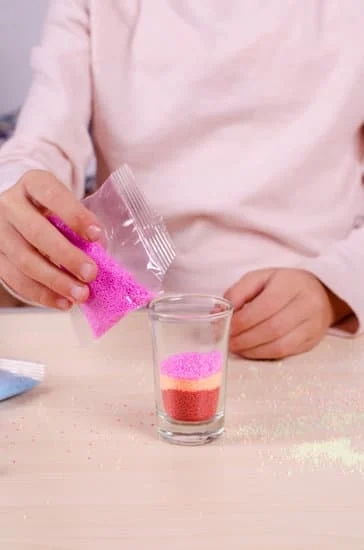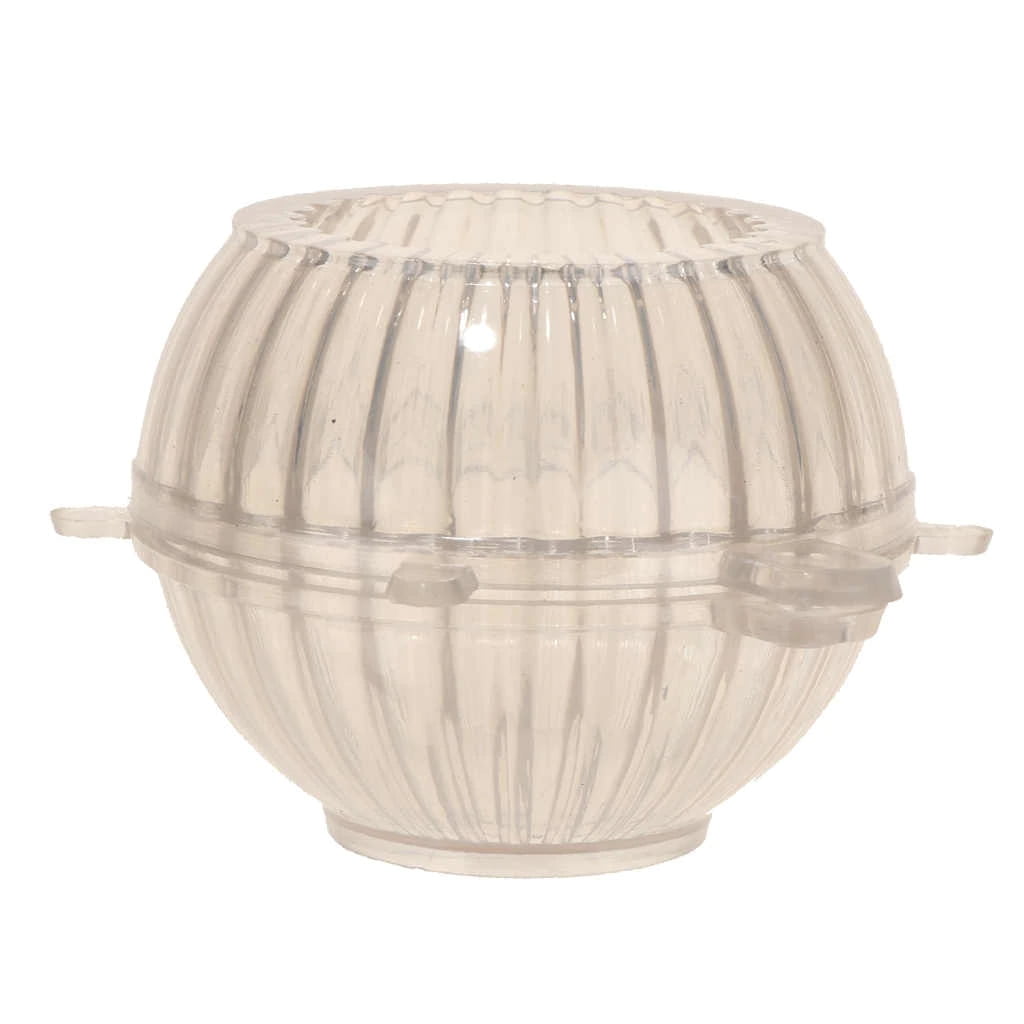Candle making flashpoint refers to the temperature at which a particular material can ignite and burn. Understanding this crucial concept is essential for anyone involved in the craft of candle making, as it directly impacts the safety and performance of the candles produced. Whether you are a novice or experienced candle maker, being aware of the flashpoints of different ingredients is vital in ensuring a successful and safe candle-making process.
In candle making, the flashpoint plays a significant role in determining how flammable a material is when exposed to heat sources such as flames or hot surfaces. It serves as a crucial indicator of the potential fire hazard that certain ingredients can pose during the manufacturing and burning of candles. By knowing the flashpoints of various candle making materials, crafters can make informed decisions about ingredient selection and handling to minimize risks and ensure product quality.
Not only does understanding the concept of flashpoint enhance the safety aspect of candle making, but it also influences the overall performance of the finished products. Different materials with varying flashpoints can affect factors like burn time, scent throw, and even candle appearance. By choosing ingredients with appropriate flashpoints and taking necessary precautions, candle makers can create high-quality candles that burn cleanly, evenly, and safely.
Understanding the Concept of Flashpoint in Candle Making
When it comes to candle making, understanding the concept of flashpoint is essential for ensuring safety and success in your craft. The flashpoint of a substance is the temperature at which it gives off enough vapor to ignite in the presence of an open flame. This crucial measurement helps candle makers determine the appropriate handling and storage procedures for their ingredients.
In candle making, different materials such as waxes, fragrances, and dyes have varying flashpoints that need to be taken into consideration. For example, using ingredients with low flashpoints increases the risk of combustion during the melting and pouring process. On the other hand, materials with high flashpoints are safer to work with as they are less likely to ignite under normal conditions.
To measure the flashpoint of your candle making ingredients, you can use a specialized device called a flash point tester. This tool allows you to determine the exact temperature at which a substance will produce flammable vapors.
By conducting this test on each component of your candles, you can ensure that you are using safe materials in your production process. Remember that neglecting to consider the flashpoint of your ingredients can lead to accidents and compromise the quality of your candles.
Importance of Knowing the Flashpoint in Candle Making
Definition of Flashpoint in Candle Making
In the realm of candle making, the flashpoint refers to the temperature at which a particular material can ignite when exposed to an open flame or heat source. Understanding the concept of flashpoint is crucial for candle makers as it helps determine the safety and handling precautions necessary during the candle-making process. The flashpoint plays a significant role in ensuring both the quality and safety of the final product.
Ensuring Safety and Quality
Knowing the flashpoint of each ingredient used in candle making is essential for maintaining a safe working environment. Materials with low flashpoints are more prone to catching fire quickly, posing a higher risk during production. By being aware of these flashpoints, candle makers can take appropriate measures to prevent accidents, such as using proper equipment and handling procedures. Additionally, understanding flashpoints allows for better control over the overall quality of candles produced, ensuring they burn effectively and safely.
Choosing Suitable Materials
When selecting ingredients for candle making, it is paramount to consider their respective flashpoints. Opting for materials with high flashpoints can enhance the safety of the production process significantly. These materials are less likely to catch fire spontaneously, providing peace of mind for candle makers. By choosing materials with higher flashpoints, candle makers can minimize risks associated with handling flammable substances and create candles that adhere to safety standards without compromising on quality.
How to Measure the Flashpoint of Candle Making Ingredients
Setting Up a Testing Environment
Before diving into measuring the flashpoint of your candle making ingredients, it is essential to set up a testing environment that is safe and controlled. Make sure to work in a well-ventilated area free from any open flames or potential sources of ignition. Keep a fire extinguisher nearby as an added precaution.
Using a Flashpoint Testing Device
One common method for measuring the flashpoint of candle making ingredients is by using a flashpoint testing device like a Pensky-Martens Closed Cup Tester or a Cleveland Open Cup Tester. These devices heat the sample in a controlled manner until it reaches its flashpoint, which is indicated by the release of flammable vapors.
Interpreting the Results
Once you have conducted the flashpoint test on your candle making ingredient, you will be provided with a numerical value that represents its flashpoint temperature. This temperature indicates the lowest temperature at which the material can produce enough vapor to ignite. Materials with lower flashpoints are more flammable and should be handled with extra caution during the candle making process.
By understanding how to measure the flashpoint of your candle making ingredients, you can make informed decisions about handling and incorporating them into your candle-making projects. This knowledge empowers you to create candles safely while minimizing the risk of accidents in your workspace.
Common Flashpoints of Popular Candle Making Materials
When it comes to candle making, understanding the flashpoint of the materials you are using is crucial for ensuring a safe and successful process. The flashpoint is the temperature at which a material produces enough vapor to ignite in the presence of an open flame. Different materials used in candle making have varying flashpoints, so it’s important to be aware of these values to prevent any accidents during the candle-making process.
Some common candle making materials and their corresponding flashpoints include:
- Soy Wax: Soy wax typically has a flashpoint of around 250°F – 300°F, making it a relatively safe option for candle making.
- Paraffin Wax: Paraffin wax has a flashpoint ranging from 370°F – 420°F, which makes it important to handle with care due to its higher flammability.
- Beeswax: Beeswax has a high flashpoint of about 400°F – 450°F, making it one of the safest options for candle making in terms of fire hazards.
It’s essential to reference the flashpoint information provided by manufacturers when selecting materials for your candles. By choosing materials with higher flashpoints, you can reduce the risk of accidental ignition during the candle-making process. Additionally, always follow safety precautions such as using a double boiler method to melt waxes and never leaving melting materials unattended to ensure a safe and enjoyable candle-making experience.
| Candle Making Material | Flashpoint Range |
|---|---|
| Soy Wax | 250°F – 300°F |
| Paraffin Wax | 370°F – 420°F |
| Beeswax | 400°F – 450°F |
Safety Precautions When Working With Materials With Low Flashpoints
When working with materials with low flashpoints in candle making, it is crucial to take the necessary safety precautions to prevent any accidents or combustion. The flashpoint of a substance is the temperature at which it can ignite if exposed to an open flame or heat source. Common candle making materials such as fragrance oils, essential oils, and some waxes have varying flashpoints that need to be understood and handled carefully.
One of the key safety precautions when working with materials with low flashpoints is to always work in a well-ventilated area. Proper ventilation helps to disperse any fumes or vapors that may be emitted by the materials during the candle making process. This reduces the risk of inhalation and minimizes the chances of ignition due to high concentrations of flammable vapors in the air.
Additionally, it is important to store materials with low flashpoints properly in a cool, dry place away from direct sunlight and sources of heat. This helps prevent any accidental ignition or spontaneous combustion due to exposure to elevated temperatures. By following proper storage practices and handling procedures, candle makers can ensure a safe working environment and reduce the risk of fire hazards associated with materials with low flashpoints.
| Safety Precautions | Candle Making Process |
|---|---|
| Work in well-ventilated areas | Reduces risk of inhalation and ignition |
| Store materials properly | Away from direct sunlight and heat sources |
Tips for Choosing Materials With High Flashpoints for Safer Candle Making
When it comes to candle making, one important factor to consider is the flashpoint of the materials being used. The flashpoint is the temperature at which a material can ignite and produce a flammable vapor. Choosing materials with high flashpoints is crucial in ensuring safe and successful candle making. Here are some tips on how to select materials with high flashpoints for safer candle making:
- Research Material Flashpoints: Before purchasing any ingredients for your candles, take the time to research the flashpoints of each material. Look for materials that have higher flashpoints to minimize the risk of potential accidents during the candle making process.
- Opt for Natural Ingredients: Natural waxes such as soy wax and beeswax tend to have higher flashpoints compared to some synthetic waxes. By choosing natural ingredients, you can increase the overall safety of your candle making process.
- Consider Additives Carefully: Some additives used in candle making, such as fragrance oils and dyes, may have lower flashpoints than other materials. It is essential to carefully consider the flashpoints of any additives you plan to include in your candles and opt for those with higher flashpoints.
By following these tips and choosing materials with high flashpoints, you can enhance the safety of your candle making process. Remember that understanding and considering the flashpoint of each ingredient plays a significant role in producing candles that burn safely and effectively. Take the time to educate yourself on the flashpoints of different materials used in candle making to ensure a successful and hazard-free crafting experience.
It is also recommended to always work in a well-ventilated area when working with any materials, regardless of their flashpoint. Proper ventilation can help reduce the risk of vapors accumulating and creating a hazardous environment. Additionally, keeping a fire extinguisher nearby as an extra precaution is highly advisable when working with any flammable materials. Prioritizing safety by selecting materials with high flashpoints and taking necessary safety measures will contribute to a positive and worry-free candle making experience.
Exploring the Impact of Flashpoint on Candle Performance and Safety
When it comes to candle making, understanding the concept of flashpoint plays a crucial role in ensuring both the performance and safety of your homemade candles. The flashpoint of a material refers to the temperature at which it can produce enough vapor to ignite when exposed to an open flame. This information is vital for candle makers because it helps determine the safe handling and usage of various ingredients.
To measure the flashpoint of candle making ingredients, there are specific methods and tools that can be used. One common technique involves using a flash point tester, which heats up the material slowly until vapors are produced and ignited. The temperature at which this ignition occurs is recorded as the flashpoint. Another method is known as the Pensky-Martens closed-cup tester, which provides a more precise measurement by sealing off any potential sources of external ignition.
Below is a list of common flashpoints for popular candle making materials:
- Soy Wax: 600°F
- Beeswax: 400°F
- Coconut Oil: 350°F
- Fragrance Oils: Varies (typically above 150°F)
- Paraffin Wax: 370-700°F
It is essential to take safety precautions when working with materials that have low flashpoints, such as coconut oil or beeswax. These include storing them away from heat sources, using proper ventilation during melting processes, and keeping extinguishing agents nearby in case of accidental combustion. Additionally, choosing materials with higher flashpoints can greatly enhance the safety of your candle making endeavors.
Conclusion and Final Thoughts on Candle Making Flashpoints
In conclusion, understanding the concept of flashpoint in candle making is essential for ensuring both the performance and safety of your homemade candles. By measuring the flashpoint of your candle making ingredients and being aware of the common flashpoints of popular materials, you can make informed choices to create candles that burn evenly and safely.
It is crucial to prioritize safety when working with materials that have low flashpoints. Taking proper precautions, such as working in a well-ventilated area, using a double boiler for melting wax, and keeping a fire extinguisher nearby, can prevent accidents and ensure a smooth candle making process.
When selecting materials for candle making, opting for those with higher flashpoints can provide an added layer of safety. By choosing ingredients with higher flashpoints, you reduce the risk of combustion and create candles that are less likely to pose a fire hazard. Remember, the flashpoint not only impacts safety but also affects the performance and quality of your candles. So make sure to consider this important factor when embarking on your candle making journey.
Frequently Asked Questions
What Temperature Should Candles Be When Making?
The ideal temperature for making candles typically ranges between 160 to 180 degrees Fahrenheit. This allows the wax to melt evenly and thoroughly mix with any added fragrance or colorants before pouring into the mold.
What Is the Flashpoint for Essential Oils?
The flashpoint of essential oils varies depending on the specific oil being used. However, it is important to note that essential oils are flammable and should be handled with caution. Always check the flashpoint of each oil before use.
What Temperature Does Wax Ignite?
Wax can ignite at different temperatures depending on the type of wax being used. For example, paraffin wax can ignite at around 400 degrees Fahrenheit, while soy wax has a higher ignition point of approximately 500 degrees Fahrenheit. It is crucial to monitor the temperature carefully when working with wax to prevent any risk of fire.

Welcome to my candle making blog! In this blog, I will be sharing my tips and tricks for making candles. I will also be sharing some of my favorite recipes.





